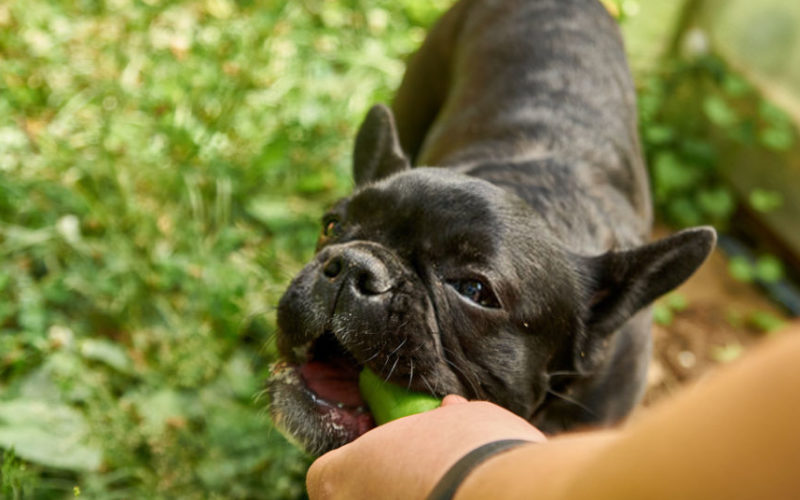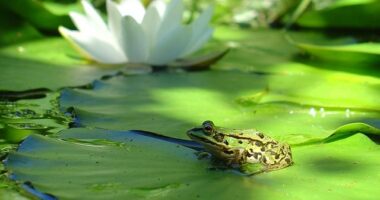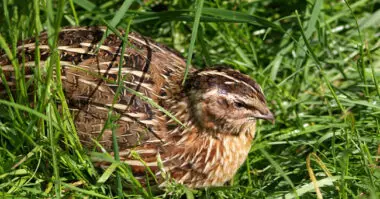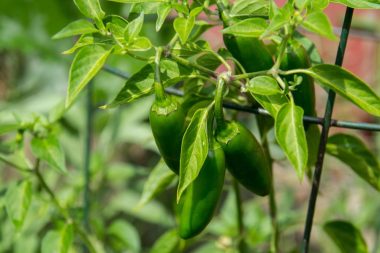Before the new planting season begins, it’s a good idea to talk about who is eating the cucumber plants in the greenhouse. Not only do we people enjoy eating crispy cucumbers, rodents, insects, worms love to feast on this plant. You can lose all the plants overnight without knowing who did it.
Contents
Do rabbits eat cucumbers
Do you have rabbits in your garden, in the same place as your cucumber plants? Sometimes rabbits can be the ones to attack your vegetables. Just feed them (carrots, for example) and they will stop attacking your vegetables.
Do squirrels eat cucumbers
It is very unlikely that squirrels will attack your cucumber plant, as they already have plenty of nuts and other food to survive.
Do turtles eat cucumbers
When it comes to turtles, it’s already more likely that they will feast on your cucumbers, however, they are very slow to eat, so it is not very complicated to catch them red-handed. A simple solution; feed them lettuce.
Other animals and insects that eat your cucumbers
Slugs
From the little grey one to the big red one, slugs are a gardener’s nightmare. The damage caused by these mollusks can be seen very quickly: the tender leaves of the vegetables are eaten and the young seedlings disappear, leaving traces of mucus (slime) in their place.
Aphids
There are different types of aphids, and the vegetables that fall victim to these sucking insects are numerous: beans, potatoes, cabbage, peppers, tomatoes, melons, lettuce, chicory, spinach, carrots, artichokes, beets, beans, cucumbers… The damage appears on the leaves and on the young shoots: deformations (crispness), discoloration, drying of the shoots and formation of fumagine.
Colorado beetle
The Colorado beetle is a beetle that devours the leaves of solanaceous plants (eggplant, tomato) but with a predilection for potatoes. The larvae are as destructive as the adults. Watch for its arrival in spring: look for yellow-orange eggs, grouped in tight clusters on the underside of the leaves.
Flea beetles
The flea beetle is a small beetle with a black shell, with bluish or golden reflections, which jumps as soon as it is disturbed. Adults feed on the leaves of many Brassicaceae (cabbage, radish, turnip, arugula) or other vegetable plants (artichoke, potato, eggplant, tomato, beet, chard), and the larvae eat the roots.
Whiteflies
They are called whiteflies, but they are biting-sucking insects of the aphid family that feed on the sap of the plants, as do their larvae. In the vegetable garden and in the greenhouse, hidden under the leaves, whiteflies attack cabbages, tomatoes, eggplants, cucurbits, strawberries and mint.
Cabbage flies
The tiny cabbage maggot lays eggs in the spring on most cabbages (cabbages, cauliflowers and Brussels sprouts), and on other Brassicaceae (turnips, radishes), near the collar. The larva then burrows underground to dig galleries in the roots. The leaves of the attacked plants wilt and the young shoots die.
Leafminers
Leafminers are larvae, caterpillars or false caterpillars of Diptera (flies), Lepidoptera (butterflies) or Hymenoptera which have the particularity of digging galleries in the leaves of plants.
In the vegetable garden, tomatoes, leeks, chives, garlic and onions can be victims of leafminers. The first signs of their presence are the traces of galleries on the leaves, linear, branched, spiral, tortuous, ovoid… Eventually, the leaves turn brown, dry up and fall off.
Moths (cutworms)
Noctuid moths are dull nocturnal moths, whose plump gray caterpillars feed on leaves (attacks resemble slug nibbling, without mucus), and sometimes also on flowers and fruits, or on the collar and roots of plants (groundworms). In the vegetable garden, carrots, cabbages, spinach, tomatoes, salads, potatoes, sorrel, radishes, celery, artichokes, strawberries… are targeted.
Cabbage worms
The cabbage maggot is a very common butterfly, with creamy white wings bearing a black spot, and whose green caterpillars feed on the leaves of all cabbages, during almost the entire season. Damage ranges from a few holes to total defoliation of leaves, with droppings soiling the remaining leaves.
Leek moth (leek worm)
The leek moth is the caterpillar of a very small brownish moth, with a white spot on each wing. It burrows into the leaves and inside the stem or bulb where it continues to grow. The leaves turn yellow and wither. Vegetables concerned: leeks, garlic, onions, shallots.
The wireworm
This is a small brown beetle whose long yellow larvae, called “wireworms”, feed on the roots of plants and tubers that are perforated. Affected plants die. Potatoes, root vegetables, lettuce, asparagus and strawberries are affected.
Ground voles (mole rats)
Small herbivorous rodents, voles nibble the roots of many vegetables: parsnips, chard, zucchini, artichokes, leeks, carrots… In addition to underground galleries, soft leaves, shortened or completely disappeared vegetables are the first signs of their presence.









